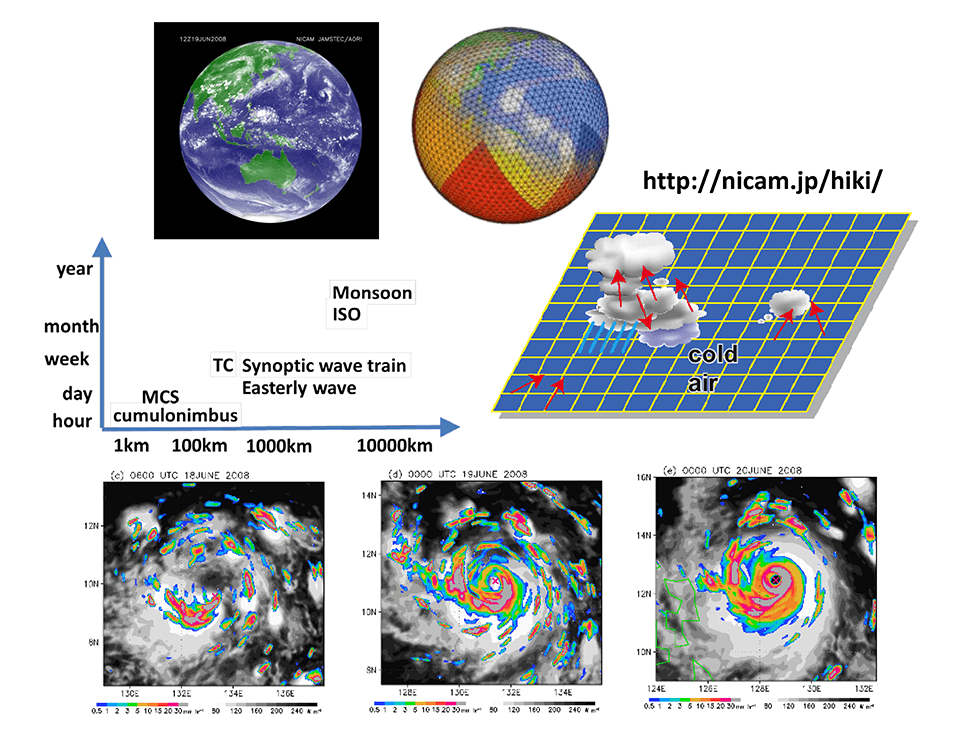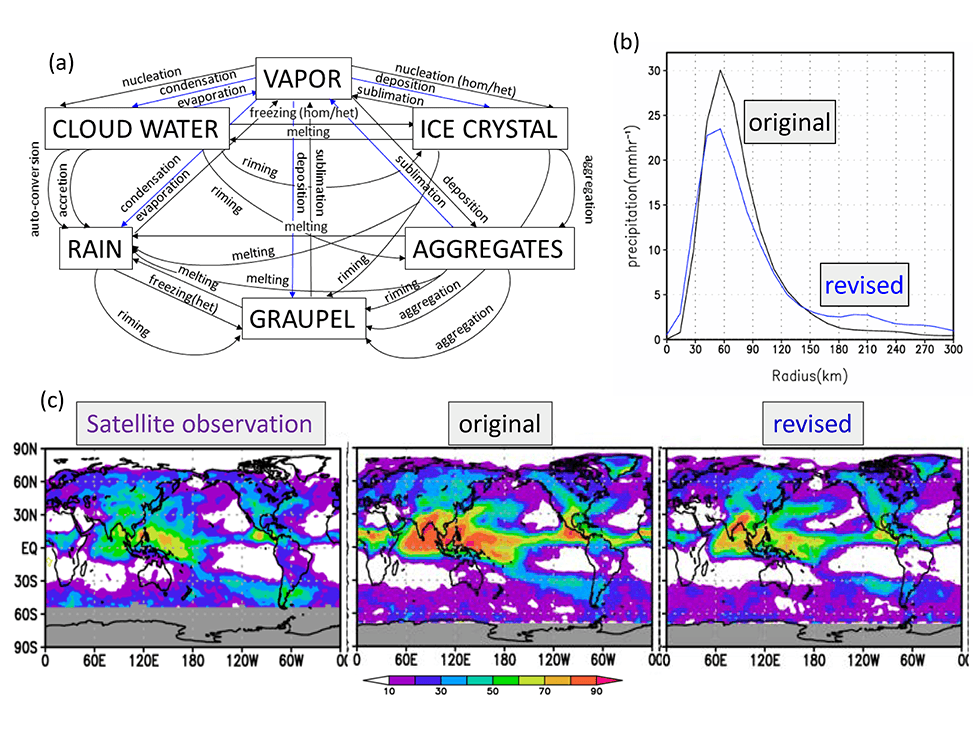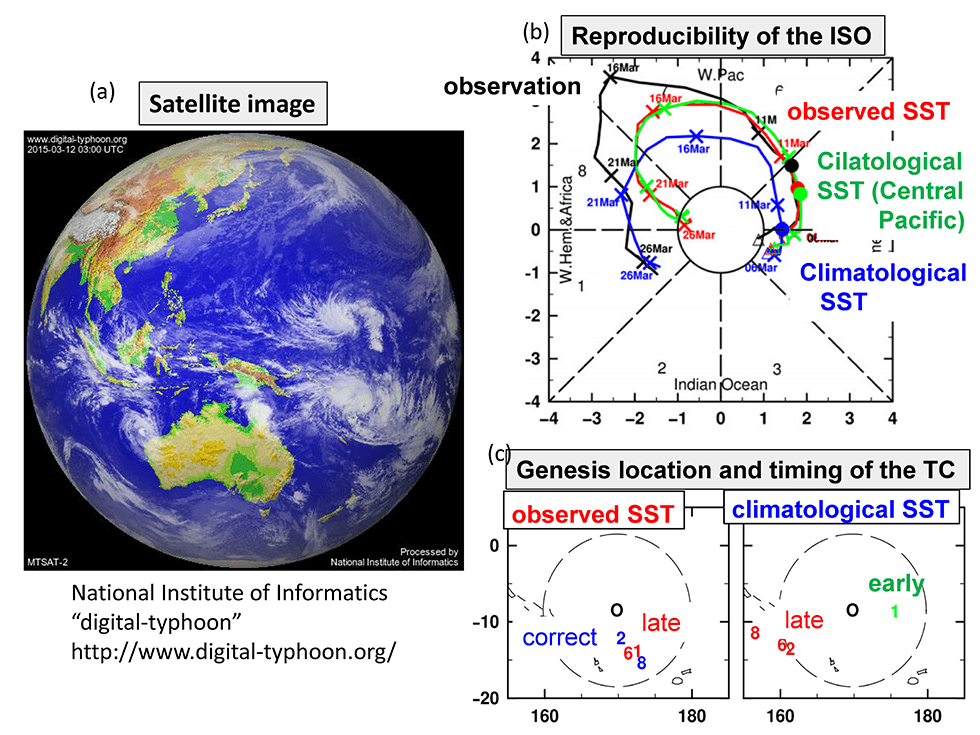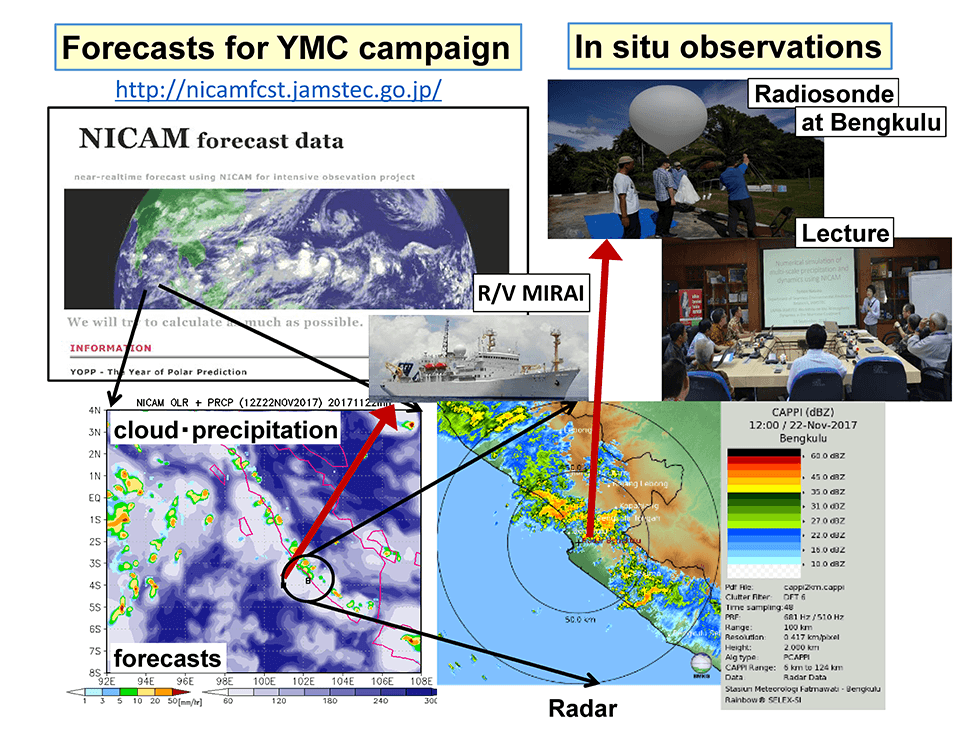Contributing to a better understanding and prediction of meteorological disasters and global change


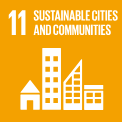


At JAMSTEC, we have been developing a global cloud-resolving model, which is capable of simulating a broad range of cloud and precipitation phenomena at a high resolution in a uniform framework (Fig. 1). Using this model, we are aiming for reliable climate prediction, including occurrences of extreme weather events, tropical cyclones, and their global change. To achieve our goal, we are upgrading physical processes in the model (Fig. 2) and executing huge numerical simulations using high-performance super-computers, such as the Earth Simulator. We will participate in research activity associated with an international project, including the Subseasonal to Seasonal Prediction Project (S2S) led by the World Meteorological Organization (WMO) (Fig. 3). Another mission for us is to promote the synergy between global cloud-resolving modeling and international observational projects led by JAMSTEC. Contributing to the development of partner countries through these observational projects is also within our scope. We plan to create new scientific knowledge of the intraseasaonal oscillation, tropical cyclones, extreme weather events, and their relationship by 2021, and develop a prediction system for the probability of the occurrence of extreme weather events associated with intraseasonal oscillation or tropical cyclones by 2025. With these research activities, we intend to contribute to a better understanding and prediction of meteorological disasters and global change, and achievement of SDGs .
